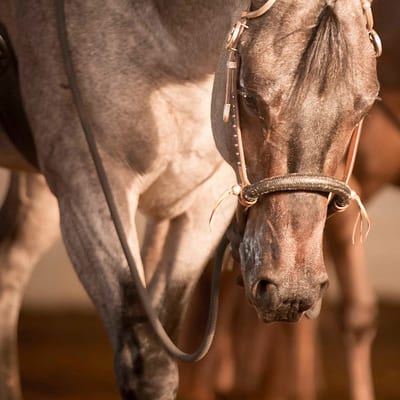“They are worth their weight in gold” is a saying that is often heard when talking about a broke horse. They are the ones that you trust with your novice, select or small fry. They know their job, are incredibly reliable and build confidence for riders of all ages and skill levels.
As your skills progress, the time may come when you are ready to step up and accept a new challenge. You are prepared to push yourself and teach a green broke horse all of the things your broke horse taught you. You are excited about the untapped potential and possibilities that lie ahead. You know you’ll need patience and perseverance, but in the end, it will all be worth it.
But what are some other things to keep in mind when you transition from your broke horse to a green broke one?
We put together a list of tips to help keep your experience a positive one for both you and horse.
Go back to the basics
If you’ve ridden a broke horse for some time, there is so much you probably take for granted. From ground tying and standing quietly while you untack, to properly executing a lope departure even if you got a little sloppy with your cue.
While there are varying degrees and meanings of a green broke horse, it usually infers that the horse has recently been started under saddle. You will have to train yourself to use your core horsemanship skills and teach the foundation of good basics to a green broke horse. A horse that is responsive and receptive to the basics can progress into more complicated tasks. However, the groundwork has to be laid for the training to be successful down the road.
Be soft
You may be used to throwing your leg over, plopping in the saddle and giving your horse a few taps with your legs to walk on. You have to remember; a green broke horse has not had the same experiences as a broke horse. They don’t know your routine, the way you feel or how you behave around them. Even the quietest ones can be startled if you are not soft in your approach. A calm, smooth and consistent manner should be used in everything from getting on your horse to the way you use your hands. A lot of things are new to a green broke horse, so a delicate and deliberate touch with your hands, cues and demeanor will build trust and confidence.
Slow it all down
With a green broke horse, you need to slow everything down. Green broke horses won’t have any buttons yet, as they are just starting to learn to carry a rider and basic commands. They probably don’t know what it means to move off your leg into a turn, let alone spin around with speed. When you are asking for a maneuver on a green broke horse, you’ll need to slow everything down and take it to step-by-step. Be thoughtful and precise in your cues and be sure to make sense of what you are asking. Repetition, consistency and meticulousness have to be present in everything you do. These horses are impressionable, so positive and consistent reinforcement will lead to successful and willing training down the road.
Trust your trainer
They’ll likely be right beside you during your journey with a green broke horse, so you need to trust them fully and completely. They may tell you to take a break and that they need some time alone to reach a particular milestone or get over a particular hurdle. Or they may say to you that your horse isn’t quite ready to show or that pushing your horse too hard to reach a specific goal is going to be more than he can handle. Part of trusting in the process is trusting your trainer. They’ll be with you to celebrate your success and help you regroup if you stumble. In the end, the sense of pride and satisfaction will be shared with your trainer, and you’ll be glad you followed their guidance along the way.
Sweat the small stuff
The saying is “don’t sweat the small stuff,” but in this instance, you really should sweat the small stuff. This is how green broke horses turn into broke horses. Positive reinforcement and praise are crucial to the success of a green broke horse. Celebrating what might be considered as a small win, is a significant first step in building a confident, trusting and willing partner. Always be proud of your achievements and progress, no matter how small they might seem.
About the Author: Julie Hoefling was born and raised in Akron, Michigan but now resides in Cave Creek, Arizona with her husband, Jerry. She works at Central Garden & Pet (Equine Division – Farnam) as a Brand Manager over grooming, wound, and leather care. Julie shows her horse, Shady Impulse in the Level 1 Amateur Western All-Around events under the guidance of Ryan and Andrea Kail.









